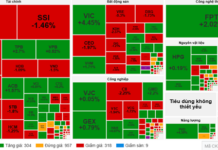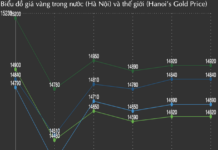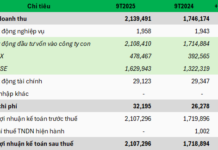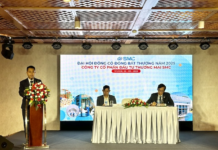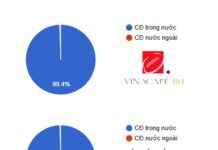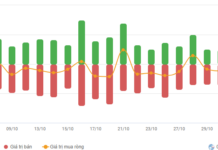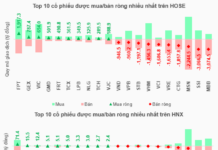Bottleneck in Access to Capital for Small and Medium-Sized Enterprises
Speaking at the event, Ms. Pham Thi Thanh Huyen, Senior Financial Expert at the International Finance Corporation (IFC), emphasized the role of small and medium-sized enterprises in the Vietnamese economy and the reality of financial shortages. According to an assessment report in 2025, Vietnam’s small and medium-sized enterprises are the backbone of the economy, strongly contributing to GDP, labor employment, and import-export turnover. However, small and medium-sized enterprises in Vietnam are currently facing development challenges. There are many reasons for this, including financial constraints, making it difficult for businesses to access capital.
Citing the report, Ms. Huyen pointed out that the financial gap among Vietnamese small and medium-sized enterprises accounts for nearly 22% of GDP, equivalent to approximately 48.5 billion USD. This figure has increased significantly compared to three years ago, which was 23 billion USD.
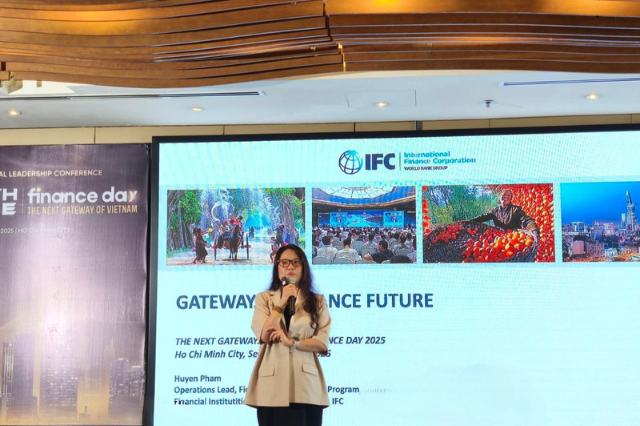
Ms. Pham Thi Thanh Huyen, Senior Financial Expert at the International Finance Corporation (IFC)
|
What are the obstacles for small and medium-sized enterprises in accessing capital? According to Ms. Pham Thi Thanh Huyen, these include factors related to market entry, land access, and internal factors within enterprises, such as human resources, legal, accounting, and auditing teams, or the digital transformation process of each enterprise. These issues are related to the requirements for financial reporting and internal auditing. When enterprises lack transparent information, it becomes challenging to work with banks.
Regarding collateral, Ms. Huyen mentioned that when enterprises approach banks for capital, the banks usually inquire about collateral first. Not many small and medium-sized enterprises own real estate. In the past, Vietnamese commercial banks have not been proactive in designing products that do not require real estate collateral. The lack of diverse lending parties in the market is also a challenge.
Additionally, there is a shortage of independent third parties providing ancillary services to the financial industry, such as data and data analysis companies and asset management companies, etc.
Mr. Chu Minh Tuan, Director of the Business Center for Digital Solutions and Payment at VPBankSME, also acknowledged that many small and medium-sized enterprises still face difficulties in obtaining loans and are often rejected. Banks are typically constrained by risk appetite and control limits. Each bank will assess various factors, including human resources, business ethics, and decision-making, with varying risk appetites.
 Speakers at the event
|
Solutions to Access Unsecured Loan Capital
Ms. Pham Thi Thanh Huyen highlighted the government’s current efforts to improve the legal environment. Firstly, the government has issued numerous resolutions and legal documents to promote the development of the private economy. Notably, Resolution 57 on promoting digital technology development and Resolution 68, which includes outstanding points to boost the private economy. Resolution 68 encourages financial institutions to provide loans based on cash flow and movable and intangible assets as collateral. These innovative financial products can benefit small and medium-sized enterprises.
Resolution 68 also requires a review of regulations concerning lending organizations and financial leasing companies to foster the growth of this market and, consequently, increase the number of financial service providers for small and medium-sized enterprises.
It is evident that unsecured loan capital is becoming more accessible to small and medium-sized enterprises.
Alongside the improved legal environment, the IFC expert also emphasized the responsibility of enterprises: “What is the innovation within the enterprises themselves? We must strive for digital transformation and transparency in our financial information. This way, when we approach banks or financial institutions, they will have trust in us.”
 Panel discussion on solutions for capital access
|
At the event, Mr. Le Nguyen Vu Phuong, CFO and Accountant of Saigon Food, shared Saigon Food’s successful experience in accessing capital. According to Mr. Phuong, Saigon Food has built a transparent model from the outset. The company utilizes ERP, a comprehensive system covering everything from input to output, including financial reporting. Saigon Food’s financial reports are always ready for any requesting agency or unit. Currently, the company has taken another step toward technological innovation by accepting electronic signatures on audited financial reports, eliminating the need for sealed hard copies. From this, Mr. Phuong emphasized the importance of transparency and encouraged enterprises to be ready to meet transparency requirements.
Mr. Phuong also suggested that enterprises proactively explore loan packages and prepare comprehensive dossiers. The CFO of Saigon Food advised small and medium-sized enterprises to manage their cash flow effectively, taking weekly, monthly, and annual management actions to ensure a positive cash flow.
Mr. Phuong also suggested that during challenging business environments, enterprises should invest in innovation for growth. For example, Saigon Food invested in a solar energy system, equipment upgrades, and software improvements during the COVID pandemic.
Notably, to access unsecured loans, the expert shared three criteria used by a CEO of a bank for loan evaluation. The first criterion is the founder, which refers to the qualities of the company’s founders, shareholders, and leaders. If they are honest and ethical, the company will score a point. The second is the transparency and stability of the cash flow. Banks will assess this to determine the loan amount. The third is the business model, i.e., the company’s business form, and whether the company will survive for the next 5 to 10 years for debt collection.
– 11:12 11/09/2025

